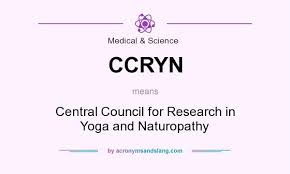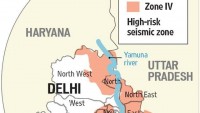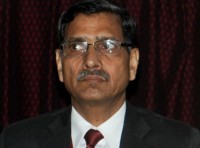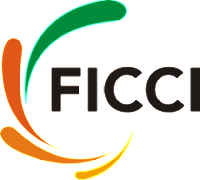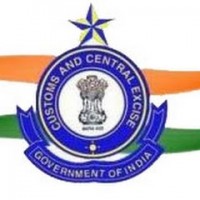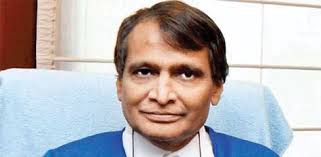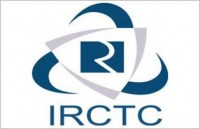In this year’s Budget, central excise duty of 1% without input and capital goods tax credit or 12.5% with credit was imposed on articles of jewellery falling under heading 7113 of the First Schedule to the Central Excise Tariff 1985. Subsequent to that, the Government had set up a Sub-Committee of the High Level Committee, headed by Dr. Ashok Lahiri to interact with Trade & Industry on issues relating to procedure and compliance relating to excise duty of articles of jewellery.
The Sub-Committee has given its report on 23.06.2016, which has been accepted by the Government . In this connection, the Central Government has issued following notifications and circulars to give effect to the Sub-Committee’s recommendations:
- Notifications issued:
| Notification No. |
Gist of notifications |
| 26/2016 – Central Excise |
Seeks to amend notification No. 12/2012-Central Excise so as to prescribe 1% excise duty (without input and capital goods credit) on parts of articles of jewellery falling under heading 7113 of the Central Excise Tariff Act, 1985 (5 of 1986), and to prescribe a criteria for classification of an articles of jewellery or part of articles of jewellery or both as that of a particular precious metal.27/2016 – Central Excise
Seeks to partially exempt Central Excise duty on articles of jewelleryfalling under heading 7113 of the Central Excise Tariff Act, 1985 (5 of 1986) manufactured by:
(a) re-conversion of jewellery given by the retail customer, or
(b) mounting of precious stone given by the retail customer.28/2016 – Central ExciseSeeks to amend notification No. 8/2003-Central Excise dated 1st March, 2003, so as to increase for articles of jewellery or parts of articles of jewellery or both, falling under heading 7113 of the Central Excise Tariff Act, 1985 (5 of 1986):
(a) the SSI Exemption limit from Rs. 6 crore to Rs. 10 crore; and
(b) the SSI Eligibility limit from Rs. 12 crore to Rs. 15 crore.29/2016 – Central ExciseSeeks to amend notification No. 17/2011-Central Excise, dated the 1stMarch, 2011, so as to exclude handicrafts falling under heading 7113 of the Central Excise Tariff Act, 1985 (5 of 1986), from the purview of excise duty exemption for “handicrafts”.
33/2016 – Central Excise (N.T.)Seeks to notify, for articles of jewellery or parts of articles of jewellery or both, falling under heading 7113 of the First Schedule to the Central Excise Tariff Act, 1985 (5 of 1986),
(a) for articles of jewellery or parts of articles of jewellery or both (other than those which are manufactured from the precious metal provided by the retail customer), the first sale value, that is the value at which such articles of jewellery or parts of articles of jewellery or both, are sold for the first time, as the tariff value;
(b) for articles of jewellery or parts of articles of jewellery or both manufactured from the precious metal provided by the retail customer, the value which is sum of,-
i. the cost of additional materials used by the manufacturer or principal manufacturer, as the case may be, for making such articles of jewellery;
ii. the labour charges charged by the manufacturer or principal manufacturer, as the case may be, from the retail customer; and
iii. the value of precious metal provided by the retail customer,
as the tariff value.34/2016 – Central Excise (N.T.)Seeks to notify the Articles of Jewellery (Collection of Duty) Rules, 2016, applicable to articles of jewellery or parts of articles of jewellery or both falling under heading 7113 of the Central Excise Tariff Act, 1985 (5 of 1986). These rules, inter-alia, provide manner of payment of Central Excise duty on articles of jewellery or parts of articles of jewellery or both, including an optional scheme for payment of such Excise duty.35/2016 – Central Excise (N.T.)Seeks to amend the Central Excise Rules, 2002 in relation to articles of jewellery or parts of articles of jewellery or both, falling under heading 7113 of the First Schedule to the Central Excise Tariff Act, 1985 (5 of 1986), so as to:
i. provide that the quarterly return (ER.8) will also apply to the manufacturers or principal manufacturers of parts of articles of jewellery, falling under heading 7113;
ii. prescribe that the date of submission of quarterly return, for manufacturers or principal manufacturers of articles of jewellery or parts of articles of jewellery or both, falling under heading 7113, for quarter ending on 31st March, 2016, and quarter ending on 30th June, 2016, shall be the 10th August, 2016; and
iii. as separate rules are being prescribed for articles of jewellery or parts of articles of jewellery or both falling under heading 7113 of the said Schedule to the said Tariff Act, applicability of Rule 12AA is being restricted to articles of precious metals falling under heading 7114.36/2016 – Central Excise (N.T.)Seeks to amend the CENVAT Credit Rules, 2004 in relation to articles of jewellery or parts of articles of jewellery or both, falling under heading 7113 of the First Schedule to the Central Excise Tariff Act, 1985 (5 of 1986), so as to include a principal manufacturer of articles of jewellery or parts of articles of jewellery or both as manufacturer for the purposes of the CENVAT Credit Rules, 2004.37/2016 – Central Excise (N.T.)Seeks to provide a modified format for quarterly return, ER-8, for return of excisable goods cleared at the Central Excise duty rate of 1% [including articles of jewellery or parts of articles of jewellery or both, falling under heading 7113] or 2%.38/2016 – Central Excise (N.T.)Seeks to amend notification No. 35/2001-Central Excise (N.T.) so as to:
(i) provide that a person engaged in the manufacture of articles of jewellery or parts of articles of jewellery or both, falling under chapter heading 7113 of the First Schedule to the Central Excise Tariff Act, 1985 (5 of 1986) may get himself registered by 31st day of July, 2016;
(ii) exempt a person engaged in the manufacture of articles of jewellery or parts of articles of jewellery or both, falling under chapter heading 7113 of the First Schedule to the Central Excise Tariff Act, 1985 (5 of 1986) from the requirement to submit plan of the factory premises under simplified registration procedure.39/2016 – Central Excise (N.T.)Seeks to amend notification No. 17/2006-Central Excise (N.T) dated the 1st August, 2006 so as to exempt a manufacturer or principal manufacturer of articles of jewellery or parts of articles of jewellery or both, falling under heading 7113 of the Central Excise Tariff Act, 1985 (5 of 1986) from filing of annual return.40/2016 – Central Excise (N.T.)Seeks to amend notification No. 36/2001-Central Excise (N.T.) dated 26th June, 2001, so as to exempt a manufacturer or principal manufacturer of articles of jewellery or parts of articles of jewellery or both, falling under heading 7113 of the Central Excise Tariff Act, 1985 (5 of 1986) from taking central excise registration upto the full exemption limit, which is being increased to Rs. 10 Crore.43/2016 – CustomsSeeks to exempt organic sugar upto a quantity of 10,000 MT in a year, from export duty subject to specified conditions.
- Circulars issued:
| Circular No. |
Gist of circulars |
| 1040/28/2016 – CX |
Clarification on computation of exemption and eligibility and exemption limits and other related issues for small scale industries [SSI] exemption under Notification No. 8/2003-CE dated 1st March 2003 in respect manufacturer or principal manufacturer of articles of jewellery or parts of articles of jewellery or both.1041/29/2016 – CXGuidelines for Excise Audit of Manufacturers / Principal Manufacturers of articles of jewellery or parts of articles of jewellery1042/30/2016 – CXExport related procedural simplifications – excise duty on articles of jewellery falling under heading 7113.1043/31/2016 – CXGeneral procedures regarding excise duty on articles of jewellery or parts of articles of jewellery or both falling under heading 7113.1044/32/2016 – CXGuidelines for issue of summons, visits, search, seizure, arrest and prosecution regarding manufacturers or principal manufacturers of articles of jewellery or parts of articles of jewellery or both.1045/33/2016 – CXTaxability of stock on February 29, 2016 – Excise duty imposition on articles of jewellery in the Budget 2016-17.
All these notifications and circulars along with Joint Secretary (TRU-I)’ D.O. on the subject, can be downloaded from the CBEC website. http://www.cbec.gov.in/



